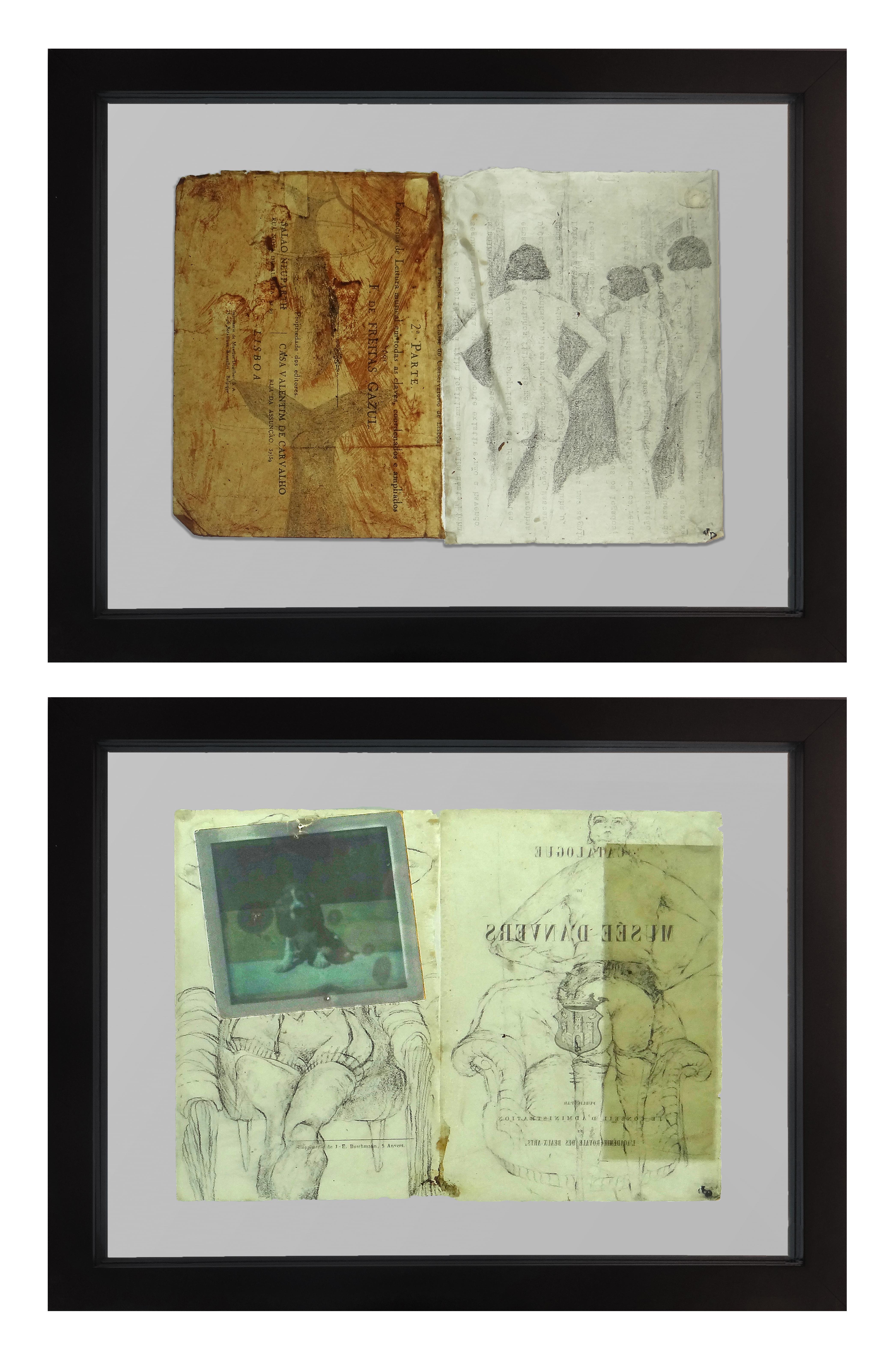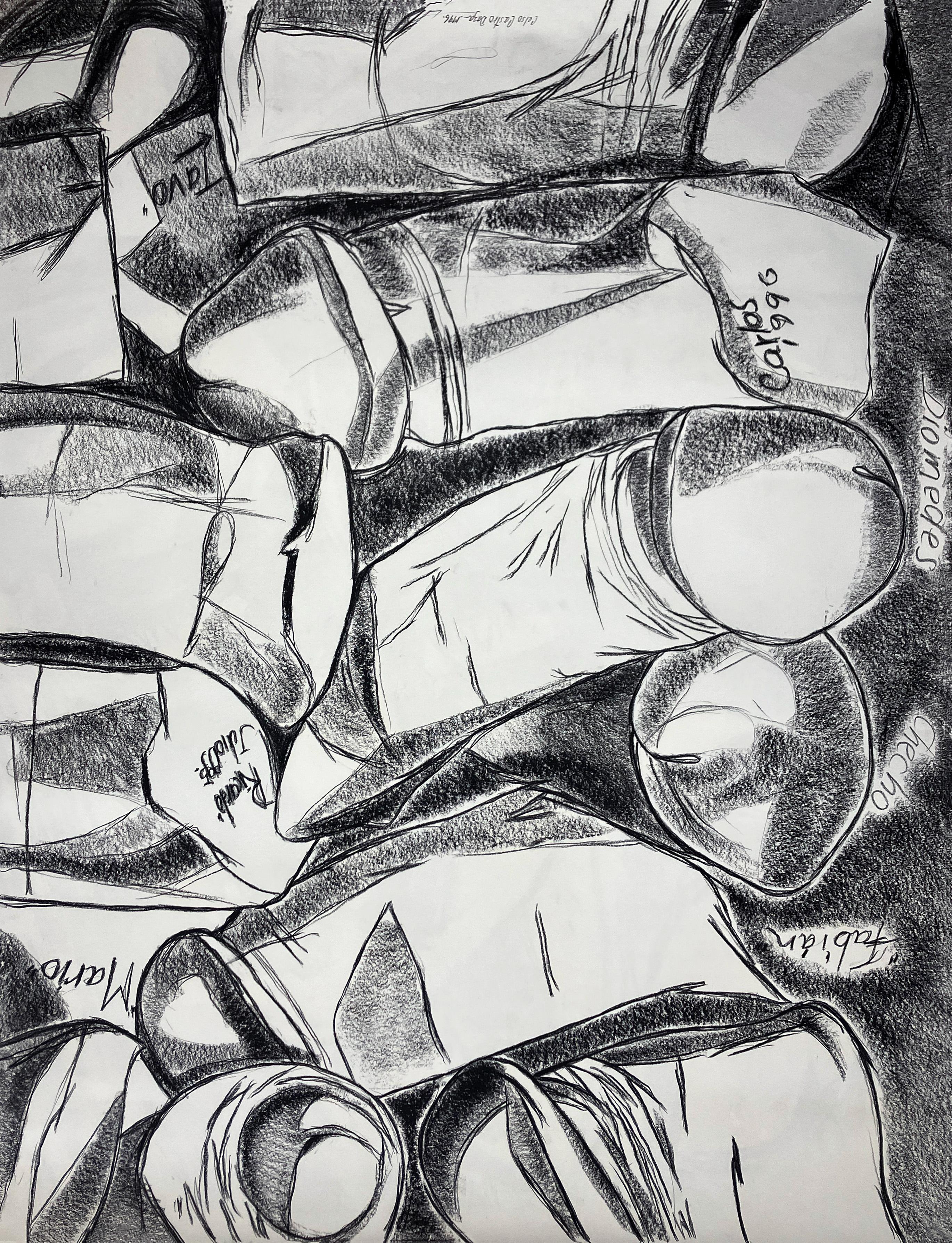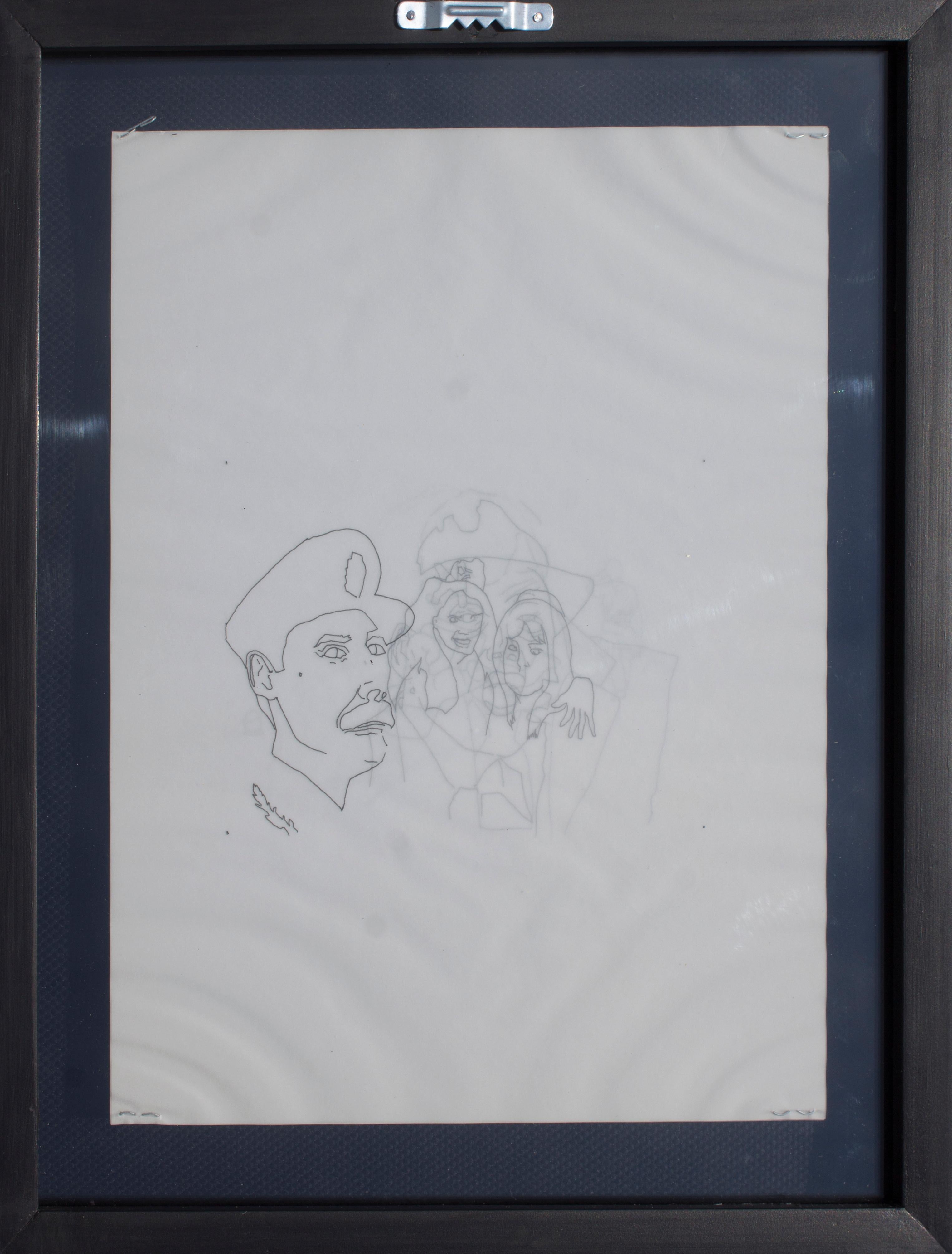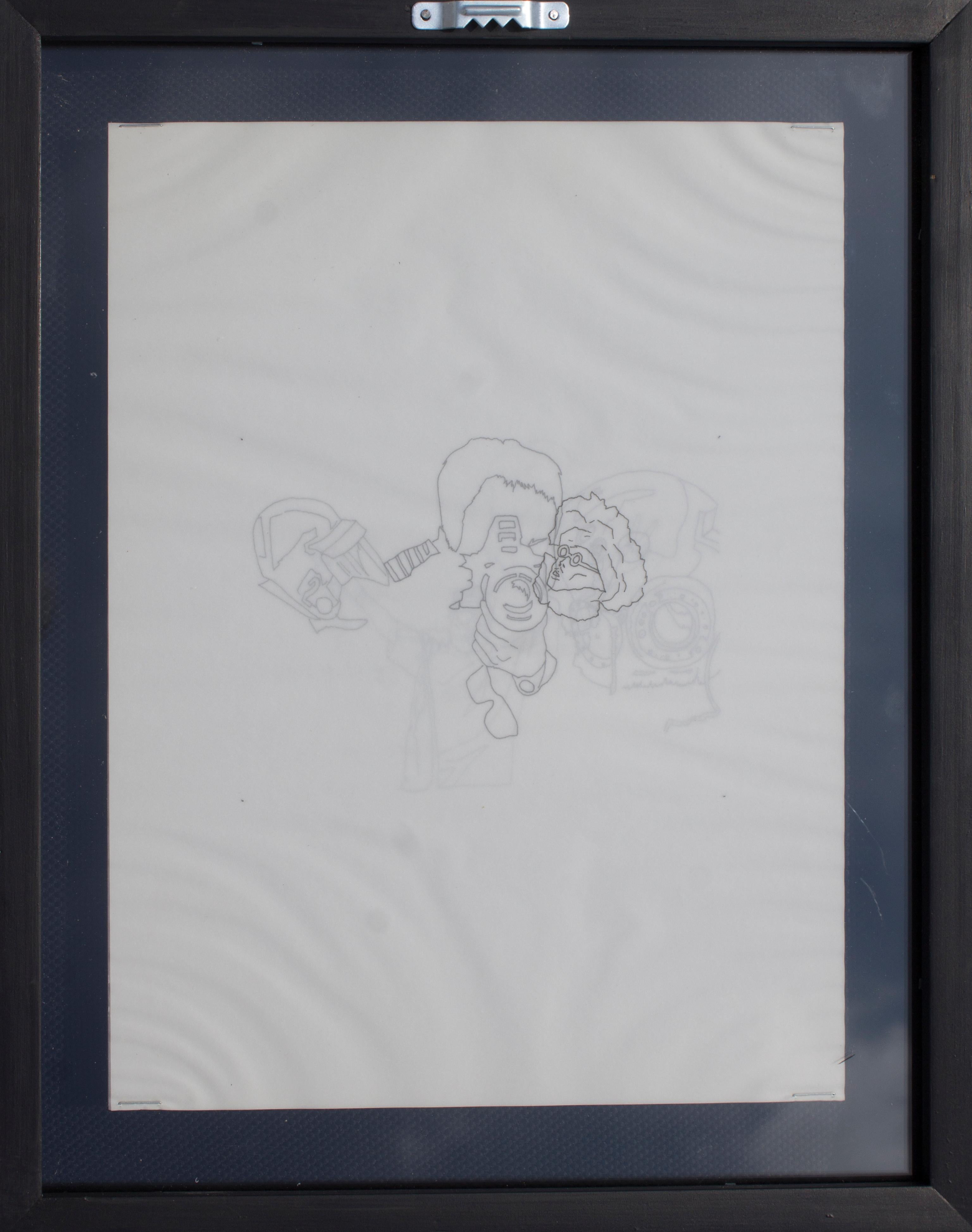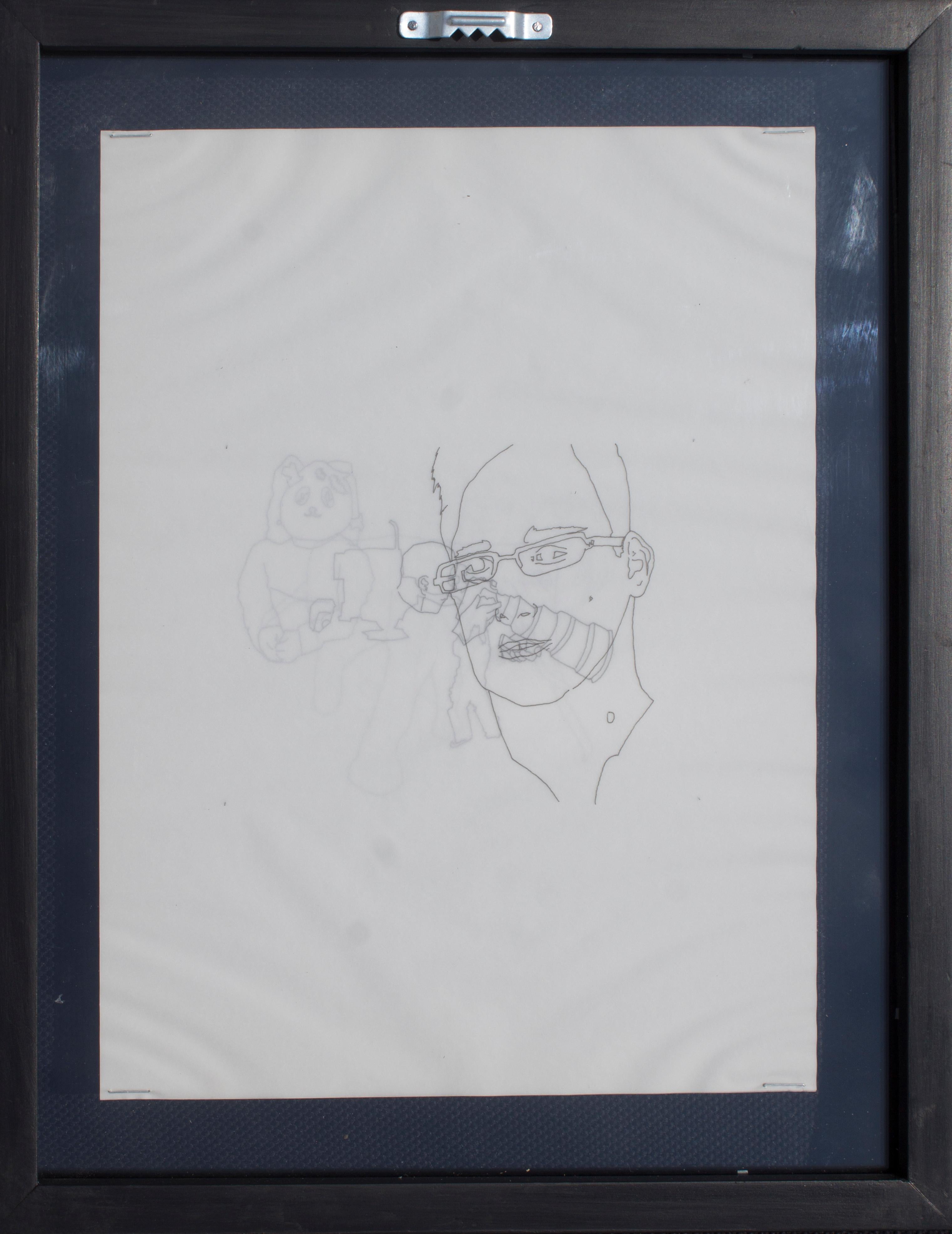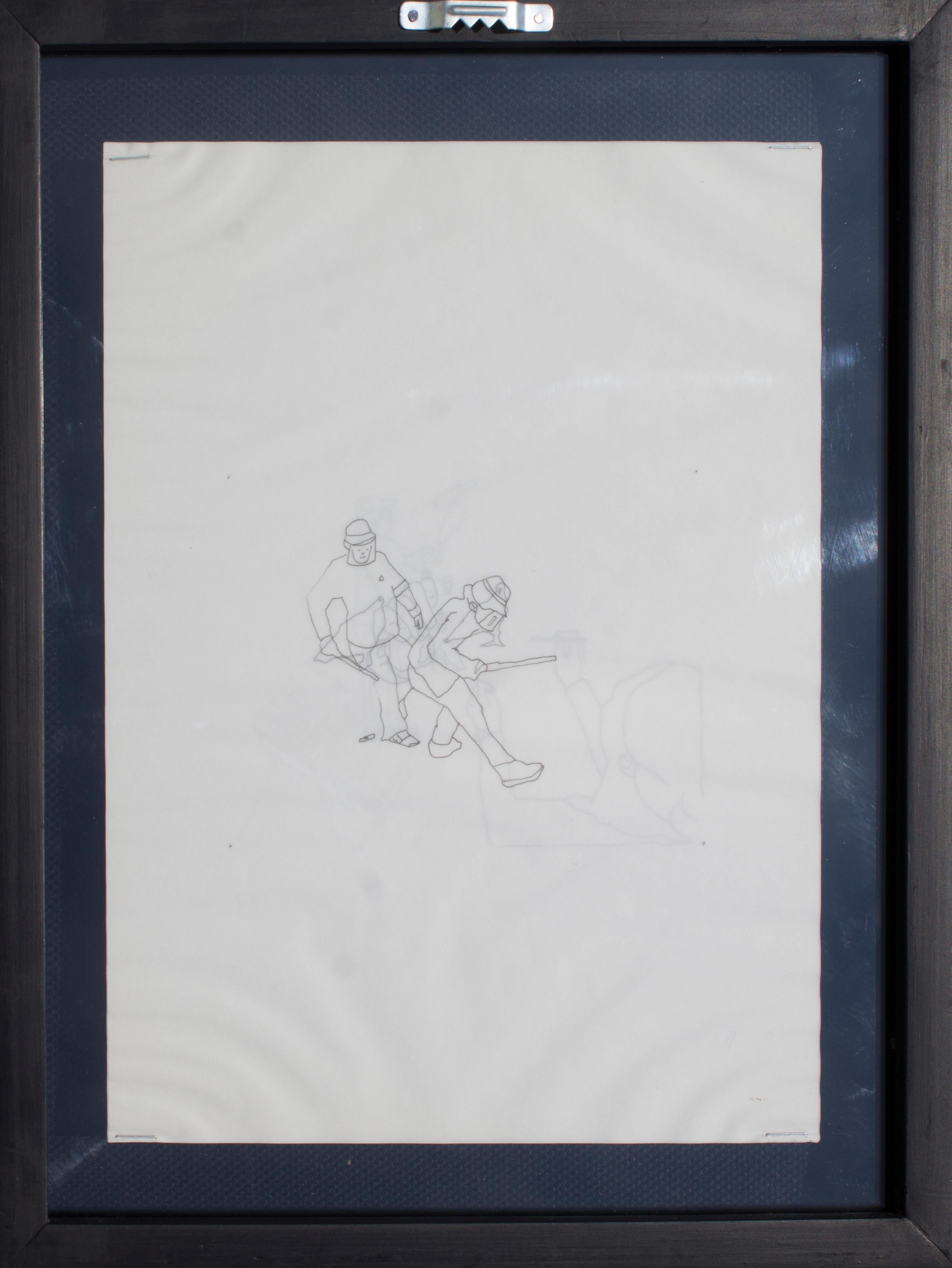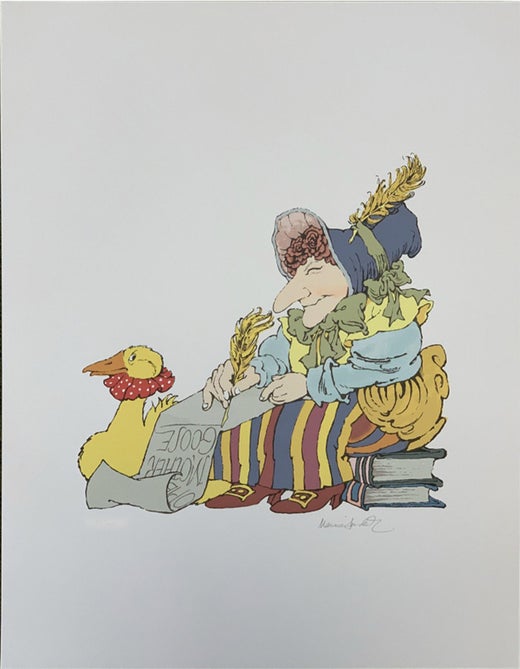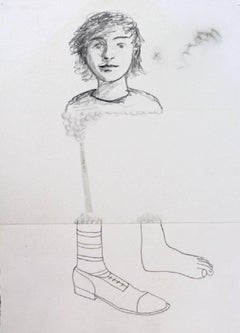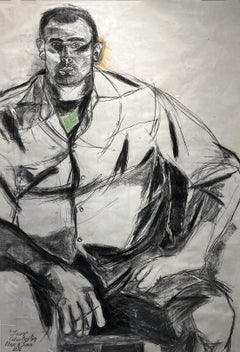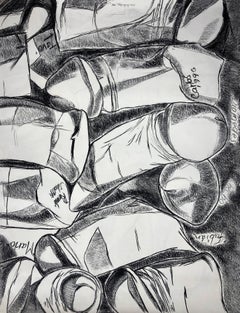Original Pencil Drawing from PIERRE, "I DONT CARE" (CBS 1970s)
View Similar Items
Maurice SendakOriginal Pencil Drawing from PIERRE, "I DONT CARE" (CBS 1970s)
About the Item
- Creator:Maurice Sendak (1928 - 2012, American)
- Dimensions:Height: 12.24 in (31.09 cm)Width: 12.5 in (31.75 cm)
- Medium:
- Movement & Style:
- Period:
- Condition:Minor wear and tear.
- Gallery Location:Surfside, FL
- Reference Number:1stDibs: LU382741822
Maurice Sendak
Dubbed by one critic “the Picasso of children’s literature” and once addressed by former President Bill Clinton as “the King of Dreams,” Maurice Sendak illustrated nearly a hundred picture books throughout a career that spanned more than 60 years. Some of his best known books include Chicken Soup with Rice (1962), Where the Wild Things Are (1963), and In the Night Kitchen (1970).
Born in Brooklyn in 1928 to Jewish immigrant parents from northern Poland, Sendak was a largely self-taught artist. His characters, stories, and inspirations were drawn from among his own neighbors, family, pop culture, historical sources, literary influences, and long-held childhood memories. Along with William Steig, Ludwig Bemelmans and Laurent de Brunhoff he is one of the most popular authors of children’s books in the world.
Sendak worked with such well-known children’s authors as Ruth Krauss, Else Minarik, and Arthur Yorinks, and illustrated books by Leo Tolstoy, Herman Melville, Isaac Bashevis Singer, the Brothers Grimm, and the poet Randall Jarrell. He began a second career as a costume and stage designer in the late 1970s, designing operas by Mozart, Prokofiev, Ravel, and Tchaikovsky, among others.
Sendak won numerous awards, including a Caldecott Award, the international Hans Christian Andersen Award, a National Book Award, the Astrid Lindgren Memorial Award, and a National Medal of Arts. His books continue to be read by millions of children and adults and have been translated into dozens of languages and enjoyed all over the world.
Find original Maurice Sendak prints, paintings and other art for sale on 1stDibs.
(Biography provided by Lions Gallery)
- Original Pencil Drawing from PIERRE, "I DONT CARE" (CBS 1970s)By Maurice SendakLocated in Surfside, FLAn original animation drawing from the CBS-TV broadcast of Sendak's "REALLY ROSIE" - (this was the first time "Rosie" appeared anywhere other than Sendak's original book) - this cel is from the PIERRE, "I DONT CARE" sequence. this is the original pencil drawing from the 1970s. it is from the estate of the film producer Dan Hunn. Maurice Bernard Sendak, June 10, 1928-2012 Dubbed by one critic “the Picasso of children’s literature” and once addressed by former President Bill Clinton as “the King of Dreams,” Maurice Sendak illustrated nearly a hundred picture books throughout a career that spanned more than 60 years. Some of his best known books include Chicken Soup...Category
1970s Pop Art Figurative Drawings and Watercolors
MaterialsPaper, Carbon Pencil
- Original Pencil Drawing from PIERRE, "I DONT CARE" (CBS 1970s)By Maurice SendakLocated in Surfside, FLAn original animation drawing from the CBS-TV broadcast of Sendak's "REALLY ROSIE" - (this was the first time "Rosie" appeared anywhere other than Sendak's original book) - this cel is from the PIERRE, "I DONT CARE" sequence. this is the original pencil drawing from the 1970s. it is from the estate of the film producer Dan Hunn. Maurice Bernard Sendak, June 10, 1928-2012 Dubbed by one critic “the Picasso of children’s literature” and once addressed by former President Bill Clinton as “the King of Dreams,” Maurice Sendak illustrated nearly a hundred picture books throughout a career that spanned more than 60 years. Some of his best known books include Chicken Soup...Category
1970s Pop Art Figurative Drawings and Watercolors
MaterialsCarbon Pencil, Paper
- Exquisite Corpse, Cadavre Exquis, Spanish Surrealist Drawing 3 ArtistsBy Xisco MensuaLocated in Surfside, FLProvenance: This piece was deaccessioned from the Bass museum in Miami Beach florida. This piece is a good museum example of Exquisite corpse, also known as exquisite cadaver (from the original French term cadavre exquis), A method by which a collection of words or images is collectively assembled. This example is by Manuel Saez, Xisco Mensua and Guillermo Paneque. Each collaborator adds to a composition in sequence, either by following a rule or by being allowed to see only the end of what the previous person contributed. The technique was invented by surrealists. Surrealism principal founder André Breton reported that it started in fun, but became playful and eventually enriching. In the beginning were Yves Tanguy, Marcel Duchamp, Jacques Prévert, Benjamin Péret, Pierre Reverdy, and André Breton. Other participants probably included Max Morise, Joan Miró, Man Ray, Simone Collinet, Tristan Tzara, Georges Hugnet, René Char, and Paul and Nusch Éluard. Henry Miller often partook of the game to pass time in French cafés during the 1930s. Manuel Sáez (born 6 March 1961) is a Spanish, self-taught artist. Since 1984, he has been living and working in Valencia. The Enciclopedia Universal Ilustrada Europeo-Americana describes Manuel Sáez as among the most important painters of the turn of the 21st century owing to his simultaneously sensual and psychological approach to the world of objects, landscapes, figures and portraits. As a resident fellow of the Spanish Fine Arts Academy in Rome in 1990, Sáez elaborated a series of portraits called Biografia no autorizada In 1991 Sáez held his first important show at the Fundació La Caixa. in Valencia In 1996 he presented his first retrospective, Colección Exclusiva 1984-1995, in the Club Diario Levante of Valencia, as well as the Madrid Circle of Fine Arts, the Salas Verónicas of Murcia, the Castellón Delegation and the Brocense of Cáceres. In 2000 Sáez exhibited in Mexico City's Museo Rufino Tamayo and in the Instituto Valenciano de Arte Moderno (IVAM) in Valencia. In 2008 Sáez's work could be seen at the Sala Parpalló in Valencia. In 2003-04, Dispersions was exhibited at the Bass Museum of Art in Miami. In 2007, Sáez's work is featured in the Valencian Institute of Modern Art's (IVAM) El Pop Art en la Colección del IVAM ("Pop Art in the IVAM Collection") in Valencia.[12] Xisco Mensua Initially studied at Escuelas Virtèlia, but followed an atypical school career due to illness. Began to paint in 1978. Took a course in painting at the Escola d’Arts i Oficis (Valencia), where he had lived since the age of eight. Lived in Barcelona from 1982 to 1987, studying art at the Escola Eina for the first two years. Returned to Valencia and began exhibiting in 1990. Produced works in co-operation with Fernando Ros and Mim Juncà, as well as designing stage sets for the theatre. Now forms part of the Jacques Moran collective. Through drawing, Mensua creates a fictional world in an exercise in which he transfigures common references, whether intimate or biographic, political or social. Guillermo Paneque Seville, 1963 Spanish painter. He completed his artistic training at the Faculty of Fine Arts in Seville, Director and founder, along with Rafael Agredano and José Espaliú, of the magazine Figura in 1984. It is in the mid-eighties when his work is made known within the Andalusian artistic scene, through the production of small format paintings populated with references and symbols from the religious and everyday environment that the author mixes with a playful sense and with erotic characters that reveal a clear rejection of the Andalusian artistic tradition. His work evolves towards a formal synthesis and an iconographic cleansing in the line of conceptual art. He has starred in numerous solo exhibitions and participated in important collectives, among which include: Aperto 86 at the Venice Biennial (1986), Spain 87. Dynamiques and Interrogations (1987) at the Musée d'Art Moderne de la Ville in Paris, Spanish natures...Category
20th Century Surrealist Figurative Drawings and Watercolors
MaterialsPaper, Charcoal, Carbon Pencil
- Still Life with Vera as Raphael Original DrawingBy Josef LeviLocated in Surfside, FLIn this delicate drawing, artist Josef Levi takes reference to art history by combining figures within one composition. The two characters depicted in this composition utilize the bottom half of the great artist Raphael, gradually phasing into the portrait of lovely lady named Vera. Josef Alan Levi (1938) is an American artist whose works range over a number of different styles, but which are unified by certain themes consistently present among them. Levi began his artistic career in the 1960s and early '70s, producing highly abstract and very modernist pieces: these employing exotic materials such as light fixtures and metallic parts. By 1975, Levi had transitioned to painting and drawing still lifes. At first these were, traditionally, of mundane subjects. Later, he would depict images from art history, including figures originally created by the Old Masters. Around 1980, he made another important shift, this time toward creating highly precise, though subtly altered reproductions of pairs of female faces which were originally produced by other artists. It is perhaps this work for which he is most well known. Since around 2000, Josef Levi has changed the style of his work yet again: now he works entirely with computers, using digital techniques to abstract greatly from art history, and also from other sources. Levi's works of art in the collections of the Museum of Modern Art, NYC, the National Gallery of Art, and the Albright-Knox Museum, among many others. Levi's art has been featured on the cover of Harper's Magazine twice, once in June 1987, and once in May 1997. Josef Levi received a Bachelor of Arts degree in 1959 from the University of Connecticut, where he majored in fine arts and minored in literature. From 1959 to 1960, he served to a first lieutenant in the U.S. Army, and from 1960 through 1967 he was in the U.S. Army Reserves. In 1966, he received the Purchase Award from the University of Illinois in 1966, and he was featured in New Talent U.S.A. by Art in America. He was an artist in residence at Appalachian State University in 1969, taught at Farleigh Dickenson University in 1971 and was a visiting professor of art at Pennsylvania State University in 1977. From 1975 to 2007, Levi resided in New York City. He now lives in an apartment in Rome, where he is able to paint with natural light as he was unable in New York. From 1959 to 1960, Josef took some courses of Howard McParlin Davis and Meyer Schapiro at Columbia University which initiated him into the techniques of reproducing the works of the Old Masters. His first works, created in the 1960s, were wood and stone sculptures of women. His first mature works were abstract pieces, constructed of electric lights and steel. In 1970, Levi's materials included fluorescent light bulbs, Rust-Oleum and perforated metal in addition to paint and canvas. By 1980, Josef Levi's art had transformed into a very specific form: a combination of reproductions of female faces which were originally depicted by other artists. The faces which he reproduces may be derived from either portraits or from small portions of much larger works; they are taken from paintings of the Old Masters, Japanese ukiyo-e, and 20th-century art. Artists from whom he has borrowed include: Vermeer, Rembrandt, Piero della Francesca, Botero, Matisse, Utamaro, Correggio, Da Vinci, Picasso, Chuck Close, Max Beckmann, Pisanello, Lichtenstein. The creation of these works is informed by Levi's knowledge and study of art history. Josef Levi's paintings from this period are drawn, then painted on fine linen canvas on wooden stretchers. The canvas is coated with twenty-five layers of gesso in order to produce a smooth surface on which to work. The drawing phase takes at least one month. Levi seals the drawing with acrylic varnish, and then he may apply layers of transparent acrylic in order to approximate the look of old paintings. After the last paint is applied, another layer of acrylic varnish is sprayed on to protect the work. Most of the figures in his contemporary pieces are not paired with any others. SELECTED COLLECTIONS MUSEUM OF MODERN ART, NEW YORK, NY ALBRIGHT- KNOX GALLERY, BUFFALO, NY ALDRICH MUSEUM OF CONTEMPORARY ART, RIDGEFIELD, CT NATIONAL GALLERY OF ART, WASHINGTON, DC BROOKLYN MUSEUM OF ART, BROOKLYN, NY SMITHSONIAN NATIONAL MUSEUM OF AMERICAN HISTORY, WASHINGTON, DC CORCORAN GALLERY, WASHINGTON, DC UNIVERSITY OF NOTRE DAME ART...Category
1990s Contemporary Figurative Drawings and Watercolors
MaterialsCharcoal, Carbon Pencil
- Collaborative Contemporary Surrealist Cartoon Drawing Humphrey + CoatesBy Jennifer CoatesLocated in Surfside, FLsigned by both in pencil verso. dated. Surrealist cartoon drawing. Actual drawing size is 5.75 X 5.75. Their collaborative works on paper emerge out of an ongoing relationship where...Category
Early 2000s Pop Art Animal Drawings and Watercolors
MaterialsPaper, Ink
- Collaborative Contemporary Surrealist Cartoon Drawing Humphrey + CoatesBy Jennifer CoatesLocated in Surfside, FLsigned by both in pencil verso. dated. Surrealist cartoon drawing. Actual drawing size is 5.75 X 5.75. Their collaborative works on paper emerge out of an ongoing relationship where...Category
Early 2000s Pop Art Animal Drawings and Watercolors
MaterialsPaper, Ink
- Jairo- Portrait. Watercolor and ink on archival paper drawingBy Celso José Castro DazaLocated in Miami Beach, FLJairo, 2016 by Celso Castro-Daza Watercolor and ink on archival paper Image size: 53 H in. x 36 in. W Unframed Drawing on paper is his basic work tool, some are sketches of his surviving works, and others are sketches of moments he documents. ____________ Undefined by medium, Celso Castro’s works each carry the presence of the artist’s hand through the transparency of their process. Castro’s oeuvre is strongly divided between his photomontage assemblies and watercolor paintings: the prior is marked by the labor-intensive deconstruction of portrait photographs and the latter, by the seemingly frenzied recreation of a past encounter rendered in the drips and scribbles of paint and ink. Both discriminating in what they reveal of the subject, his photomontage and watercolor portraits exude raw sexuality through the combination of Castro’s mark-making and gaze. Celso Castro’s work is a bare-bulb erotic photo foray into the underbelly of Colombia’s drug world. Castro’s labor-intensive, photo-collage works of drug kingpins, smugglers, hitmen, countrymen, street vendors, soldiers, paramilitaries, kidnappers, and pimps pose showing with pride their erect penises...Category
2010s Contemporary Portrait Drawings and Watercolors
MaterialsArchival Paper, Archival Ink, Carbon Pencil
- Untitled I and II. Vintage book pages where the artist drew and attached poems.By Daniela Padilla MaineroLocated in Miami Beach, FLUntitled I and II by Daniela Padilla Mainero Individual Frame Size: 11.88 in. H x 15.13 in. W x 1.1 in. D Overall size: 23.76 in. H x 15.15 in. W x 1.1 in. D Vintage book pages where...Category
2010s Contemporary Figurative Drawings and Watercolors
MaterialsPaper, Wax, Carbon Pencil, Polaroid
- The Boys- Penis. Carbon Pencil on archival paperBy Celso José Castro DazaLocated in Miami Beach, FLThe Boys by Celso Castro-Daza Carbon Pencil on archival paper Image size: 47.5 in. H x 39 in. W Sheet size: 59 in. H x 42.5 in. W Unique 1996 Drawing on paper is his basic work to...Category
2010s Contemporary Nude Drawings and Watercolors
MaterialsBlack and White, Archival Paper, Carbon Pencil
- The Old Man from the last Expo. Crayon pencil on archival paperBy Celso José Castro DazaLocated in Miami Beach, FLThe Old Man from the last expo, 2016 by Celso Castro-Daza Crayon pencil on archival paper Paper size: 59 H in. x 43 in. W Image size: 54 H in. x 40 in. W On The back of the painti...Category
2010s Contemporary Nude Drawings and Watercolors
MaterialsArchival Paper, Archival Ink, Carbon Pencil
- French School, Academic Study (Male Nude)Located in London, GBPencil on paper, dated (lower right), 55cm x 44cm (76cm x 64cm framed) Drawings and paintings of the nude were central to academic art training in Europe from the 16th century onwar...Category
1850s Old Masters Nude Drawings and Watercolors
MaterialsPaper, Carbon Pencil
- De la serie aglomeraciones _03By Álvaro VerduzcoLocated in Mexico City, CDMX#draw #scketch #pencil #frame #box Por un lado está el diario de lo que ha estado sucediendo durante los últimos meses alrededor del mundo. De pequeño formato, los dibujos muestran e...Category
2010s Conceptual Figurative Drawings and Watercolors
MaterialsPaper, Pencil, Carbon Pencil

